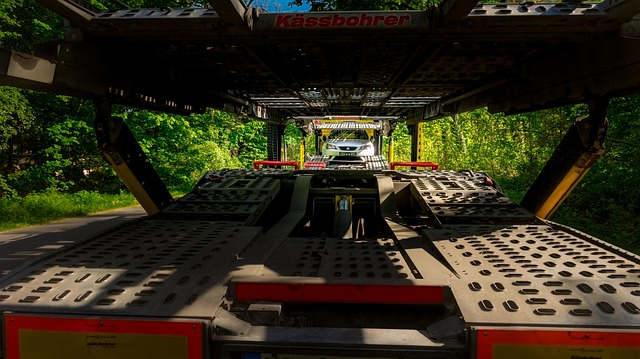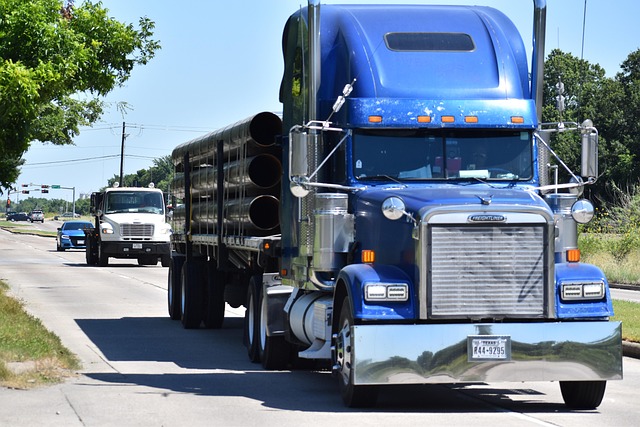Looking to register your car in California? This comprehensive guide breaks down the process step-by-step. From understanding essential requirements to choosing between online or in-person registration, you’ll learn everything needed for a smooth experience. Key steps include gathering necessary documents, undergoing DMV VIN verification, and paying fees. Get ready to hit the road legally!
- Understand California Car Registration Requirements
- Gather Necessary Documents for Registration
- Perform DMV Vehicle Identification Number (VIN) Verification
- Choose a Registration Method: Online or In-Person
- Pay Registration Fees and Receive Your License Plate
Understand California Car Registration Requirements

Before registering your car in California, it’s crucial to understand the state’s specific requirements. The California Department of Motor Vehicles (DMV) mandates several essential steps to ensure road safety and vehicle legality. One key aspect is the DMV vin verification process, which involves cross-referencing the Vehicle Identification Number (VIN) with accurate data to confirm the car’s make, model, and year. This meticulous inspection helps prevent fraud and ensures only legitimate vehicles are on California’s roads.
Additionally, owners must provide proof of insurance, complete necessary forms, and pay associated fees. A mobile vin verification service or a local shop can assist in this process by performing a VIN inspection, ensuring your vehicle’s details align with the DMV records. This step simplifies registration, especially for those who prefer a convenient, hassle-free experience.
Gather Necessary Documents for Registration

Before you start the registration process for your car in California, ensure you have all the required documents. The California Department of Motor Vehicles (DMV) will need specific information to verify your vehicle’s ownership and history. This includes a completed Vehicle Registration Application form, along with several key pieces of paperwork. One crucial document is the Vehicle Identification Number (VIN) verification, which can be obtained through a DMV vin inspection or by utilizing a mobile vin verifier for a more convenient, on-the-go option.
Gathering these documents beforehand will streamline the registration process significantly. Always double-check that you have the most recent and accurate versions to avoid any delays. Remember, a well-prepared set of documents is half the battle won when navigating bureaucratic procedures like car registration.
Perform DMV Vehicle Identification Number (VIN) Verification

After gathering all necessary documents, the next step in registering your car in California is to perform a DMV Vehicle Identification Number (VIN) Verification. This crucial process ensures that the vehicle you’re attempting to register matches the details on record with the Department of Motor Vehicles (DMV). A simple and effective way to complete this verification is by utilizing a mobile VIN inspection service, which allows for convenience and accuracy from the comfort of your own home or location of choice.
The mobile vin inspection process involves a specialized technician visiting you to perform a thorough check on the vehicle’s identity using the unique VIN code. They will cross-reference this information with data in the DMV system to confirm the vehicle’s history, ensuring it’s not stolen, has no outstanding issues, and meets all safety standards. This step is vital for maintaining California’s robust motor vehicle record-keeping system, which aids in preventing fraud and ensuring road safety.
Choose a Registration Method: Online or In-Person

When registering your car in California, you have the option to choose between an online or in-person registration method. Both options have their advantages and it’s important to pick the one that best suits your needs and schedule. If you’re comfortable with technology and prefer a quicker process, opting for an online registration through the California Department of Motor Vehicles (DMV) website is a great choice. This process involves submitting your vehicle information and documents digitally, including a successful DMV VIN verification.
Alternatively, if you’d like a more personalized approach or have specific requirements, visiting a DMV office in person could be the better option. A mobile VIN verifier or inspector can also be of service here, providing on-site VIN inspection services to ensure your vehicle’s history is accurate and clear. This method allows for immediate document processing and any necessary inspections, potentially saving you time compared to online registration.
Pay Registration Fees and Receive Your License Plate

After completing your vehicle’s registration application and providing necessary documentation at the California DMV, the next step is to pay the registration fees. These fees vary based on the type of vehicle and its age. You can typically pay online or in person at a local DMV office. Once the payment is processed, you will be issued a Registration Certificate and, if applicable, a new license plate.
For added convenience, some services offer mobile vin inspection and verification, allowing you to complete this crucial step without visiting a DMV in-person. Ensure that your plates are displayed correctly on your vehicle after receiving them. This process concludes the registration of your car in California, making it legal to drive on public roads. Remember, proper registration is not just about compliance; it also ensures your safety and the safety of other drivers on the road.
Registering a car in California involves understanding specific requirements, gathering essential documents, and completing a DMV VIN verification. After ensuring all necessary steps are taken, you can choose between online or in-person registration and promptly pay the required fees to receive your license plate. This process is a crucial step in ensuring your vehicle complies with state laws, making it safer to drive and easier to manage ownership records.
